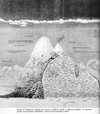Meeting 13 • 18 February 2014
|
Version: |
|
pictures of the week
|
|
|
|
mini-text of the week (start): "…the general phenomena of plant distribution…"Humboldt, "Personal Narrative", from Jaguars and Electric Eels, ed. & trans. Wilson, pp. 14-16 (read more) |
|
•√ (10') This week's thought-bite and mini-text: expensive instruments, extreme conditions, and great insights about geography, climate, and species distribution. An example of debate among climate scientists that is very appropriate to the Stegner/Powell reading you have started: Justin Gillis, "Science Linking Drought to Global Warming", NYT •√ What data do YOU collect first-hand, how do you do it, how precise is it, and how much do you trust it? Think bathroom, car, shopping, smartphone •√ Groups discuss meaning and distinction of: factual, objective, impartial, truthful (not to mention: authoritative, definitive). How does this apply to your book reports, especially how you judge what's in those books? |
|
•√ (10') An example of a very different course / project that relates to sustainabilty (and distant lands), and also illustrates how valuable are having many different kinds of knowledge / skills, and also teamwork and individual initiative. Small groups discuss and report out: What skills and behaviors are needed for "SpeakEasy"? How does that apply to our course? "Getting it" - the need and the difficulty |
|
•√ (20') Species descriptions, group projects, and book review activity: What about AvH's life and work might spark interest in: 1) AP students of various subjects; 2) middle-/high-school boys, especially non-privileged/minority learns (and especially ones that have unduly high self-images); 3) elementary school girls; 4) special-needs learners; 5) school teachers and administrators; 6) communities that could be linked to H? •+ Why the dimension of doing the activities with an eye to writing for a specific audience / helping other learners? 1) understand good learning; 2) evaluate your own educational experience; c) practice for later parenthood and citizenship; d) what satisfaction do we get out of writing papers that only the student and - maybe* - the instructor will ready (*if you're lucky / unlucky)? •+ Hallmarks / gauges of strong species descriptions / group projects: 1) Is it about you or about sustainable environmentalism and AvH? 2) Will your audience learn ABOUT or learn TO, or both? 3) Could a teacher use youractivity a) as is; b) by adding something to it? 4) Does it contribute balance to a larger effort (or is it just another take on the penguin / squid)? 5) Could you confidently present it publicly? Example: PSU Student Research Symposium •N Example of a hypothetical project: "Humboldt and Electricity" •√ Projects that might have attractice "degrees of difficulty": 1) culture contact / clash; 2) human rights; 3) youngest learners / disadvantaged learners; 4) disliked subject areas (STEM!); 5) undersupported subject areas (art - "STE(A)M"); 6) integrative approaches (multiple subject areas / levels of learners). |
|
•+ (10') Large-scale educational issues combined with our course activities: How standards are used to develop curriculum (curricula?) and learning activities. Example of major sources of lesson plans; curriculum mapping for STEM+Hawaiian language at the Lyon Arboretum; the PSU/Oregon "STEM+German" grant project; article (H0152) "School Gardens Blooming Teach Lessons On Nutrition, Environment, Science, Teamwork". |
|
•N or ≠ (05') Small groups (usual classroom groups or project groups) kick these ideas around while they (the ideas, if not the groups) are still fresh |
|
•N or ≠ (10') If time (or you can do on your own): Check your progress (other than by your current grades and the midterm) – and explore the related issues of standards, assessment and grading by exploring this self-evaluation guide for the middle of the term; this applies to your recent writing assignment, to your performance in the course, and to your larger roles as citizen and (possibly) parent. |
|
• On the horizon: Soon: A last quantification activity: precise measurement of altitude / distance (demo, then do in groups). Thought questions: Are all angles and degrees created equal? Why use a barometer to measure altitude when the theodolites and trig tables are there Looking further ahead (projects, etc.): presentation (continuation) about educational standards and their parts in the course: 1) Improving your learning by helping others to learn - This is preparation for assignments about species description and group projects. looking ahead: presentation of project ideas (just the ideas, not finished projects) in week •• Later: what it's like to read Darwin; Humboldt-named species; forming teams and scoping out projects (ideas for group projects); the iconic graphic of Chimborazo; apps Humboldt would have liked; what shall we do with (to??) the people who haven't revealed their interests and strengths and don't get "on b |

